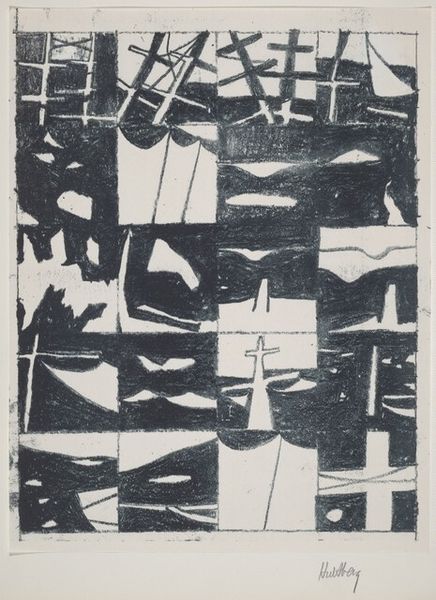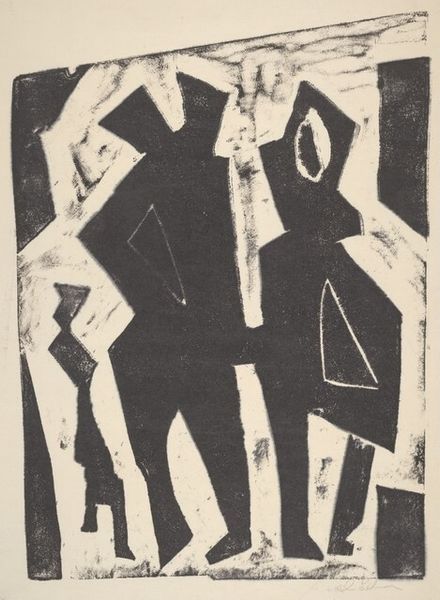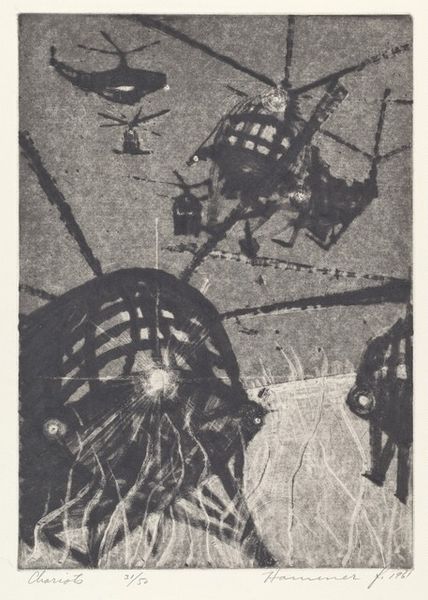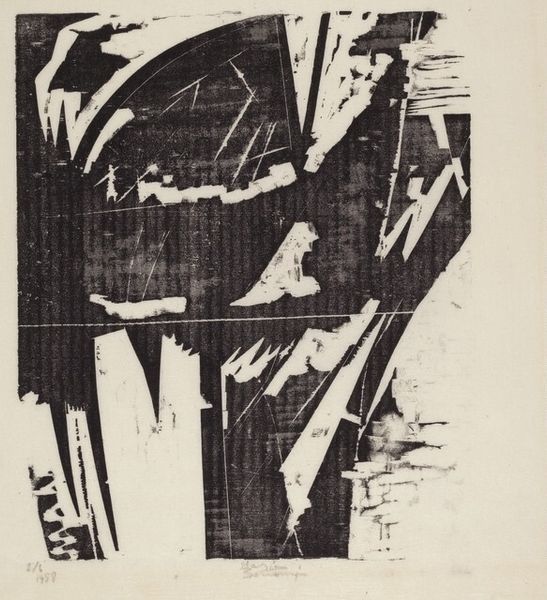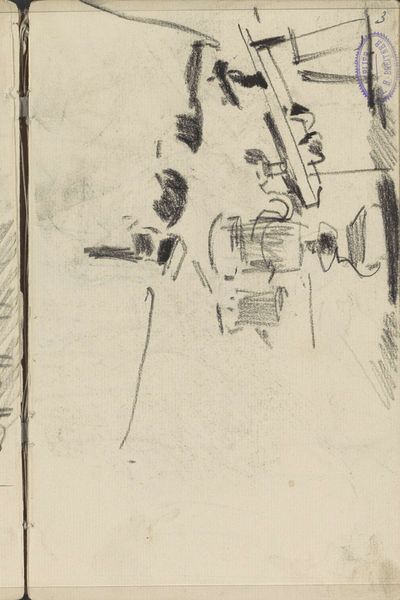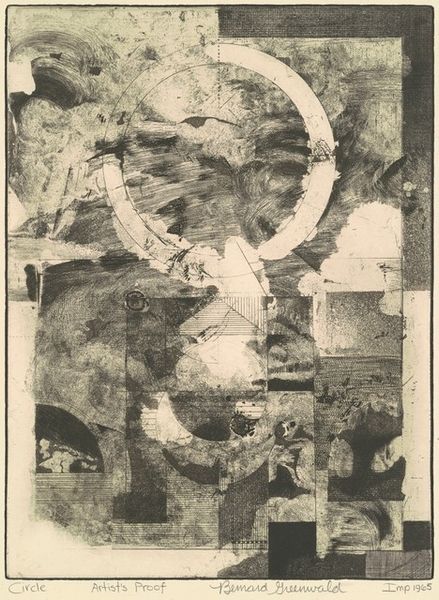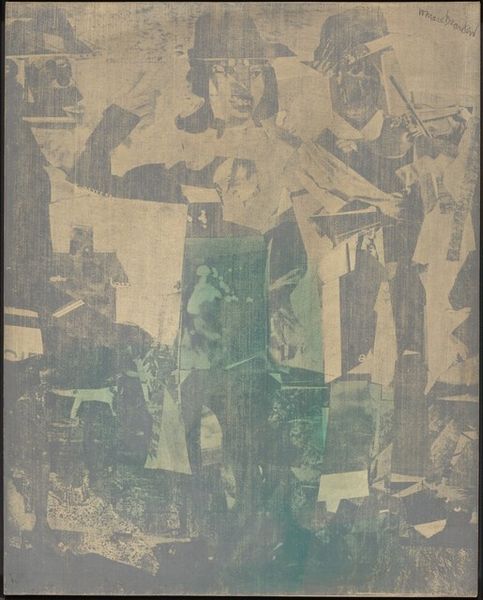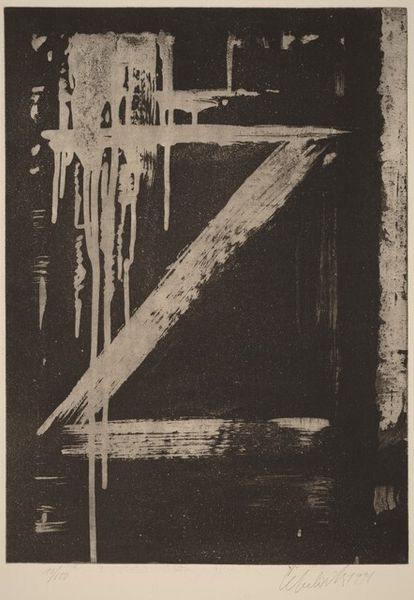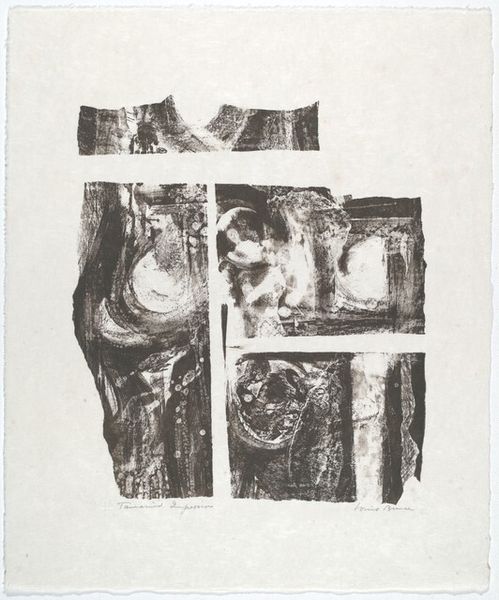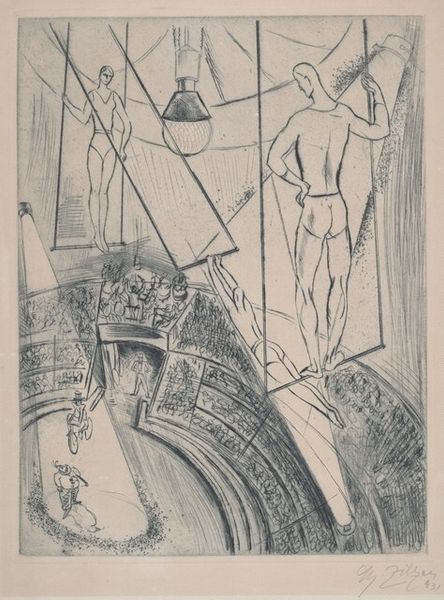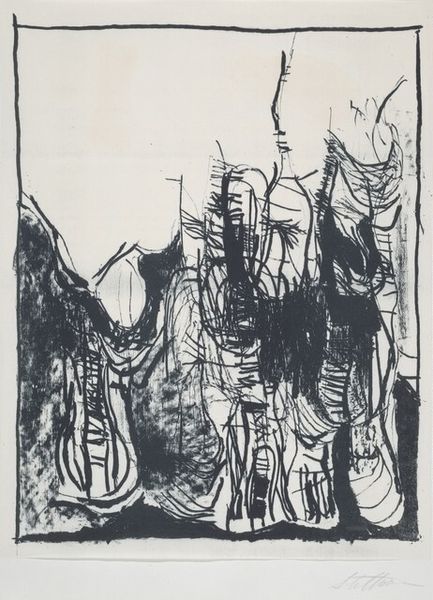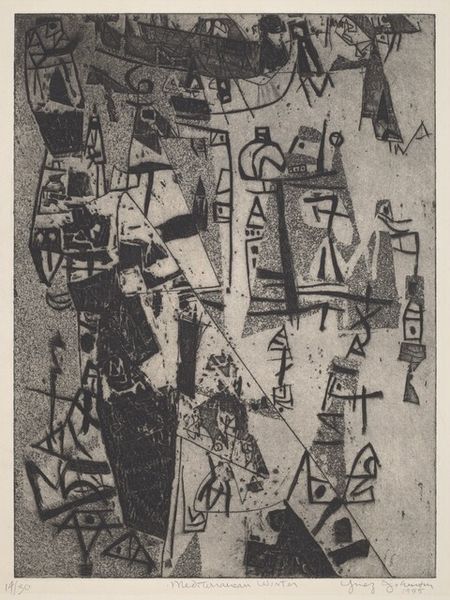
print, ink
#
abstract-expressionism
# print
#
form
#
ink
#
abstraction
#
line
Dimensions: Sheet:278 x 216mm
Copyright: National Gallery of Art: CC0 1.0
Curator: Here we have John Hultberg's "Untitled (Abstraction)" created in 1948, an ink print. It's quite striking. Editor: My initial reaction is unsettled. It's a high-contrast piece with those harsh white lines cutting through what appears to be a textured, dark field. It’s rather small. How large is it? Curator: The piece plays with elements that create a certain visual unease. This abstract expressionist style gained momentum post-war, driven by a desire to visually interpret the new realities of a war-torn world, grappling with existentialism. This era significantly broadened the role of artwork within the socio-political dialogue. Editor: I am more concerned about the materiality— the starkness of the ink and the printing process itself. Hultberg is making deliberate choices, almost like creating an industrial landscape through pure form. The limited palette accentuates the marks themselves, the labor inherent in their creation and in printing, and makes me think of its mass reproducibility and accessibility. What was printmaking's role in art during that time? Curator: Printmaking was indeed becoming more accessible and played a key role in democratizing art. Its ability to produce multiple copies challenged the elitist, gallery-focused perception of what art was, extending artistic dialogue to wider social circles beyond the established art scene. Editor: It's fascinating how an abstract work still contains so much information, the forms being in constant play. I’m really struck by those clustered lines near the top center, the thick materiality making those marks look almost architectural in their construction. Curator: Those forms may offer insight into the artistic community’s collective unconscious as society navigated through immense change, exploring themes of societal fragmentation and emerging individual autonomy. Editor: Absolutely. This piece gives us a glimpse into post-war attitudes and the material means of expression during that specific point in history. Curator: Exactly, it's about more than just personal artistic choices, but about broader collective experiences of society. Editor: Seeing that connection really highlights how important material choices can be to fully understand artistic work.
Comments
No comments
Be the first to comment and join the conversation on the ultimate creative platform.
